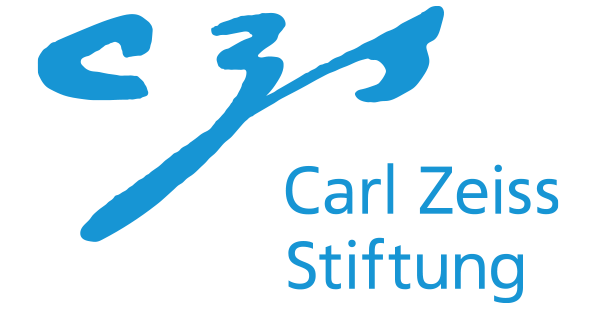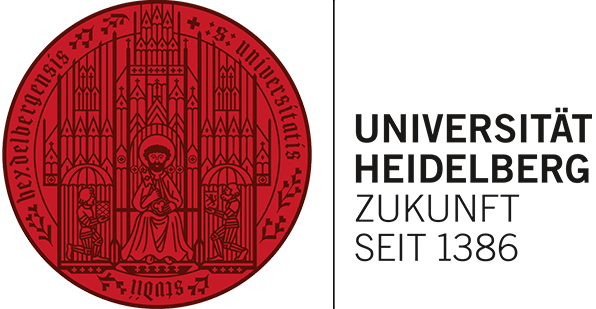Carl Zeiss Foundation 3D User Lab
The Carl Zeiss Foundation 3D User Lab provides dedicated infrastructure for 3D Additive Manufacturing in a ISO class 7 cleanroom. It is located in a dedicated laboratory with direct access to the shared cleanroom facility of the Nanostructure Service Laboratory (CFN-NSL), an open-access user facility at KIT. The NSL houses an advanced technological infrastructure for the fabrication and analysis of nanostructures and nanodevices.
The official Opening Ceremony took place May 5, 2022.
The 3D User Lab is part of the Carl Zeiss Foundation-Focus@HEiKA.
The following equipment is installed in the Carl Zeiss Foundation 3D User Lab
.elementor-accordion .elementor-accordion-item:first-of-type {
display: none;}
.elementor-accordion {
border-top: 1px solid #D4DFF2C7;
}| Printing technology | Two-Photon Grayscale Lithography (2GL) | |||
| Minimum XY feature size | 160 nm typical; 200 nm specified* | |||
| Finest XY resolution | 400 nm typical; 500 nm specified* | |||
| Finest vertical steps | 10 nm, quasi-continuous topographies possible | |||
| Minimum surface roughness Ra | ≤ 10 nm* | |||
| Area printing speed | 3 mm²/h typical for diffractive optical elements |
Key benefits
- High-speed 2.5D microfabrication
- Ultra-smooth surfaces and excellent shape accuracy
- Design freedom with sub-micrometer resolution
- Complete and ultrafast control over voxel size
- Automated processes, e.g., calibration, job execution and monitoring
- Wide choice of substrate–resin combinations
- Continuous execution of various print jobs by job queue
- Touchscreen and remote-control interfaces
| Printing technology | Layer-by-layer Two-Photon Polymerization | |||
| Minimum XY feature size | 160 nm typical; 200 nm specified | |||
| Finest XY resolution | 400 nm typical; 500 nm specified | |||
| Finest vertical resolution | 1,000 nm typical; 1,500 nm specified | |||
| Layer distance | variable, 0.1 – 5.0 µm | |||
| Maximum object height | 8 mm | |||
| Build volume | 100 × 100 × 8 mm³ | |||
| Minimum surface roughness Ra | ≤ 20 nm | |||
| Scan speed | ≥ 100 mm/s |
Key benefits
- High-speed 3D microfabrication using galvo technology
- 3D design freedom with sub-micrometer feature sizes
- Straightforward 3D printing workflow from CAD-model import to printed product
- 3D Microfabrication Solutions Sets tailored to a variety of scales and applications
- Broad range of print materials and substrates
| Light Source | UV-LED (405nm) | |||
| Optical Resolution | 2μm | |||
| Layer Thickness | 5μm~20μm | |||
| Surface Finish | 0.4-0.8µm Ra (top) 1.5-2.5µm Ra (side) | |||
| Input Data File Format | STL |
| Light Source | UV-LED (405nm) | |||
| Optical Resolution | 2μm | |||
| Layer Thickness | 5μm~20μm | |||
| Surface Finish | 0.4-0.8µm Ra (top) 1.5-2.5µm Ra (side) | |||
| Input Data File Format | STL |
Key benefits
- High measuring speed – even at full resolution
- User-friendly concept
- Safety through collision detection in all directions to protect your workpiece and measuring system
- High Dynamic Range (HDR) function, 16-bit
- Consistent high resolution output of large measuring surfaces due to HD stitching
Use cases
This established optical measuring system is successfully used, for example, for:
- Roughness measurement according to DIN EN ISO 4287 / 25178
- Topography measurement (including volume, wear, isotropy)
- Measurement of microgeometry and layer thicknesses
The provision of further devices and equipment is planned as the number of users increases. Usual lab equipment (fumehoods, glassware, chemicals, etc.) is available as well. The monthly access fee for the Nanostructure Service Laboratory will be covered for Cluster members by the Cluster 3DMM2O. Access fees to other instruments available at the NSL are not covered.
Access
Access to the cleanroom is under keycard control and new users are required to take an introductory course which is offered regularly, at least once a month. Cluster members from Heidelberg University are able to receive a guest card for the Nanostructure Service Laboratory. To obtain access to the Carl Zeiss Foundation 3D User Lab, please contact Gernot Goll.
Furthermore, any scientist also needs an introduction to the particular Nanoscribe 3D printer he/she wants to use. To receive this introduction, please contact Moritz Tremmel. For the Nanoscribe Photonics Professional GT, Sebastian Kalt can be contacted alternatively. The HEiKA Graduate School Scientific Modules “Hands-on 3D Laser Micro-Printing for Beginners” and “Hands-on 3D Laser Micro-Printing for Advanced Users” provide the skills to operate the equipment.
Location
The Carl Zeiss Foundation 3D User Lab is located at the Center for Functional Nanostructures at KIT Campus South, Building 30.25, Wolfgang-Gaede-Str. 1a, 76131 Karlsruhe.
Livestream during Opening Ceremony
During the Opening Ceremony, a Lab Tour took place via Livestream with researchers Gernot Goll, Sebastian Kalt, Pascal Kiefer and Silvia Diewald showing the lab and explaining the equipment. You can find the recording below.
You are currently viewing a placeholder content from Youtube. To access the actual content, click the button below. Please note that doing so will share data with third-party providers.
More InformationPublications
The following publications were made possible by equipment of the 3D User Lab.
-
Boosting light emission from single hydrogen phthalocyanine molecules by charging.
Rai, V. N., Gerhard, L., Sun, Q., Holzer, C., Repän, T., Krstić, M., Yang, L., Wegener, M., Rockstuhl, C., and Wulfhekel, W.
2020. Nano Letters, acs.nanolett.0c03121. doi:10.1021/acs.nanolett.0c03121. -
Tunable photonic devices by 3D laser printing of liquid crystal elastomers.
Woska, S., Münchinger, A., Beutel, D., Blasco, E., Hessenauer, J., Karayel, O., Rietz, P., Pfleging, S., Oberle, R., Rockstuhl, C., Wegener, M., and Kalt, H.
2020. Optical Materials Express 10, 11, 2928-2943. doi:10.1364/OME.402855.






